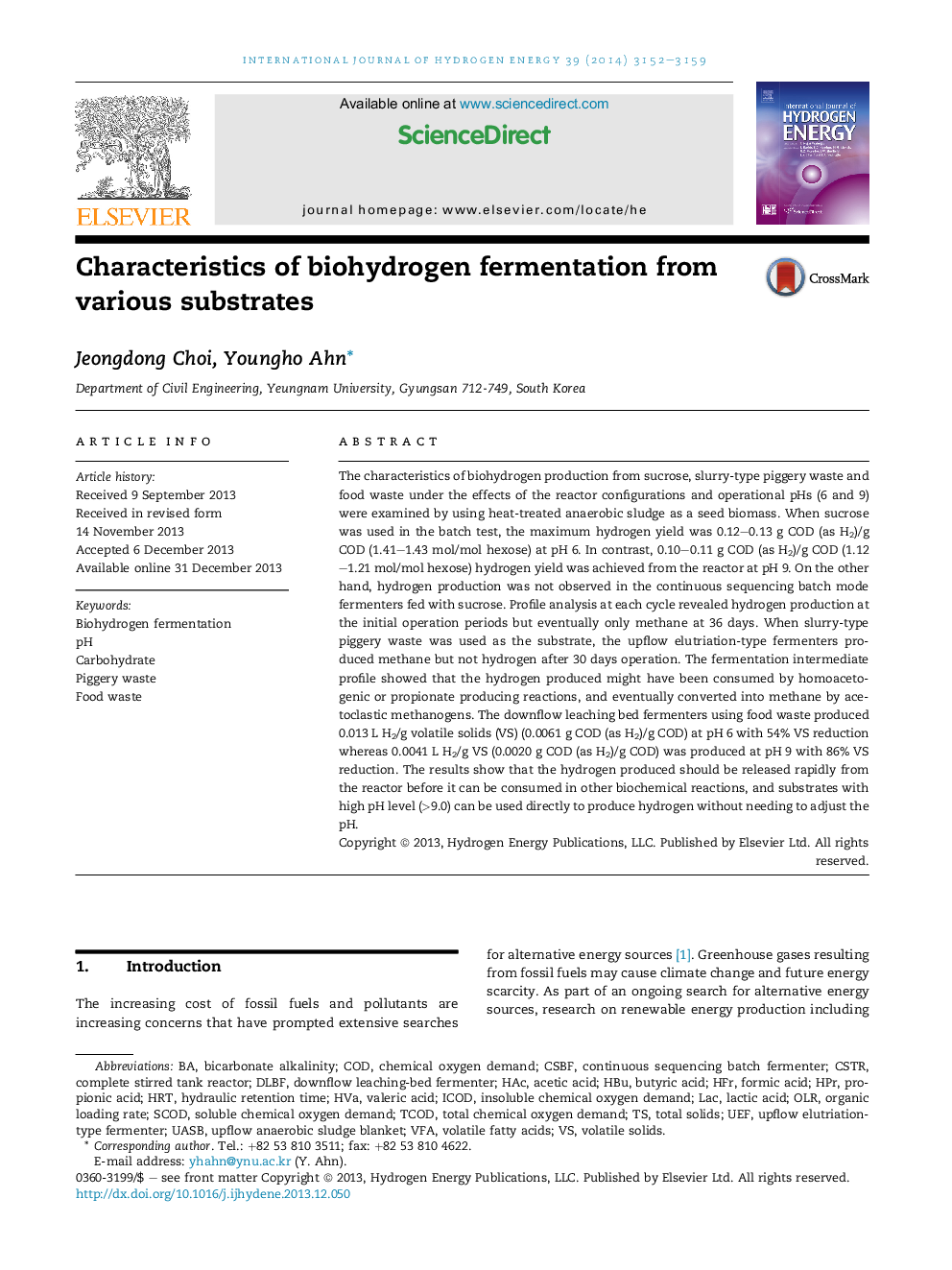| Article ID | Journal | Published Year | Pages | File Type |
|---|---|---|---|---|
| 1270620 | International Journal of Hydrogen Energy | 2014 | 8 Pages |
•Characteristics of biohydrogen production from actual wastes.•Effects of the reactor configurations and pH in hydrogen fermentation.•Hydrogen produced should be released rapidly to reactor head space.•Hydrogen loss by acetoclastic methanogens and homoacetogenic/propionate-producing bacteria.•Economic benefits for high pH substrates in biohydrogen production.
The characteristics of biohydrogen production from sucrose, slurry-type piggery waste and food waste under the effects of the reactor configurations and operational pHs (6 and 9) were examined by using heat-treated anaerobic sludge as a seed biomass. When sucrose was used in the batch test, the maximum hydrogen yield was 0.12–0.13 g COD (as H2)/g COD (1.41–1.43 mol/mol hexose) at pH 6. In contrast, 0.10–0.11 g COD (as H2)/g COD (1.12–1.21 mol/mol hexose) hydrogen yield was achieved from the reactor at pH 9. On the other hand, hydrogen production was not observed in the continuous sequencing batch mode fermenters fed with sucrose. Profile analysis at each cycle revealed hydrogen production at the initial operation periods but eventually only methane at 36 days. When slurry-type piggery waste was used as the substrate, the upflow elutriation-type fermenters produced methane but not hydrogen after 30 days operation. The fermentation intermediate profile showed that the hydrogen produced might have been consumed by homoacetogenic or propionate producing reactions, and eventually converted into methane by acetoclastic methanogens. The downflow leaching bed fermenters using food waste produced 0.013 L H2/g volatile solids (VS) (0.0061 g COD (as H2)/g COD) at pH 6 with 54% VS reduction whereas 0.0041 L H2/g VS (0.0020 g COD (as H2)/g COD) was produced at pH 9 with 86% VS reduction. The results show that the hydrogen produced should be released rapidly from the reactor before it can be consumed in other biochemical reactions, and substrates with high pH level (>9.0) can be used directly to produce hydrogen without needing to adjust the pH.
